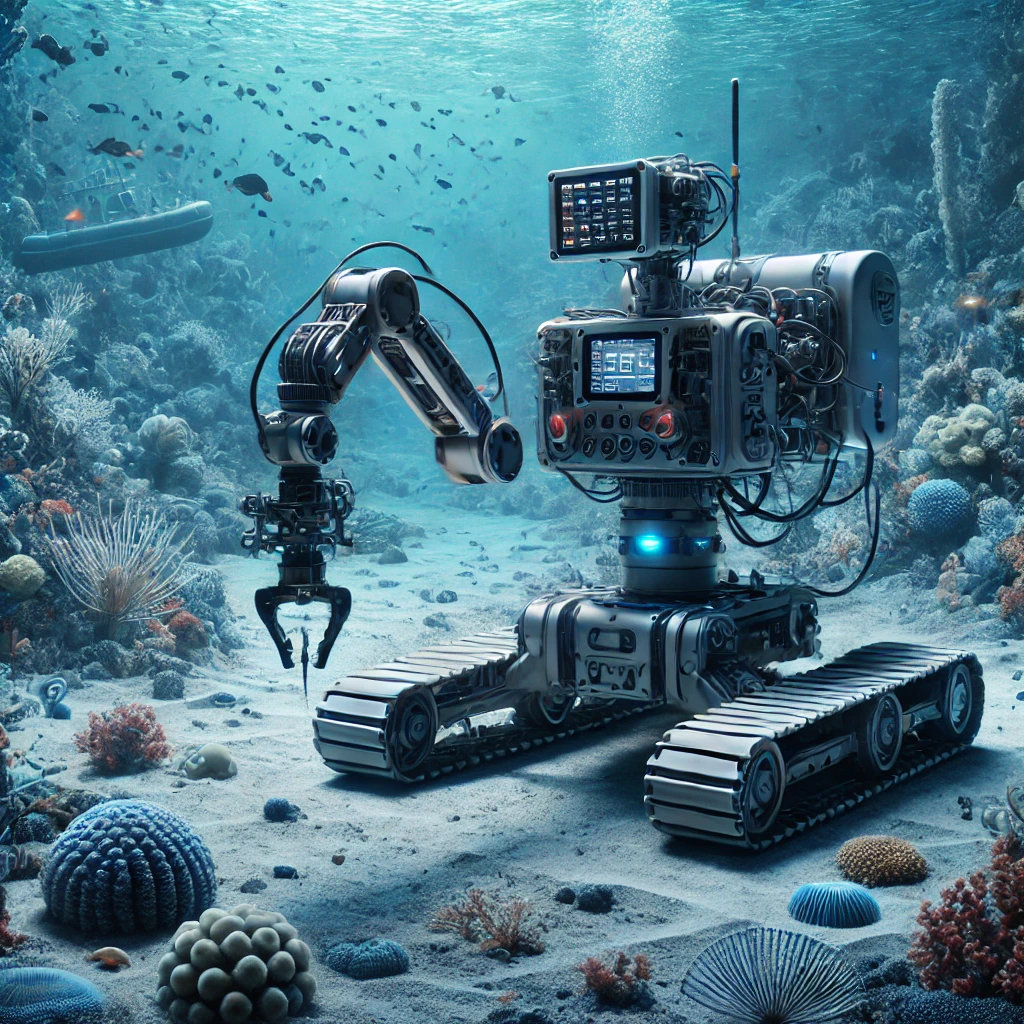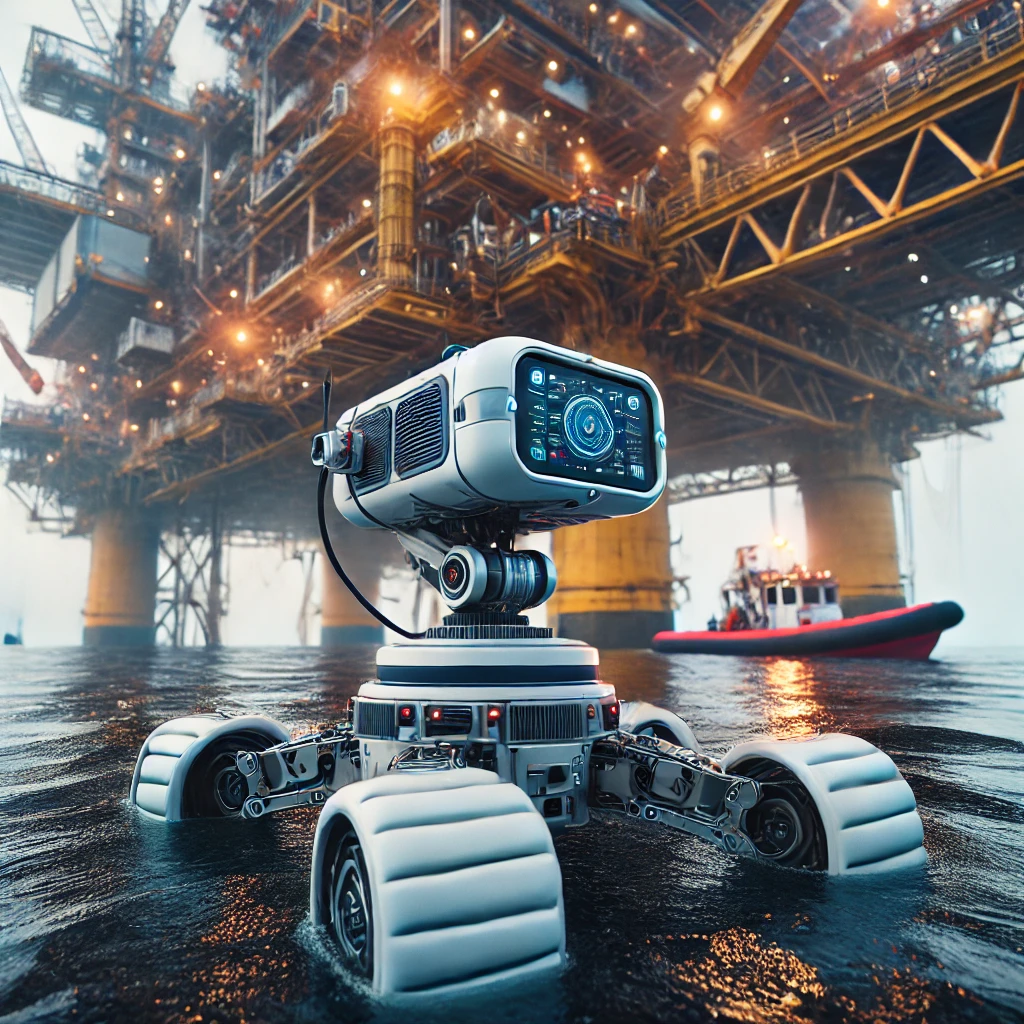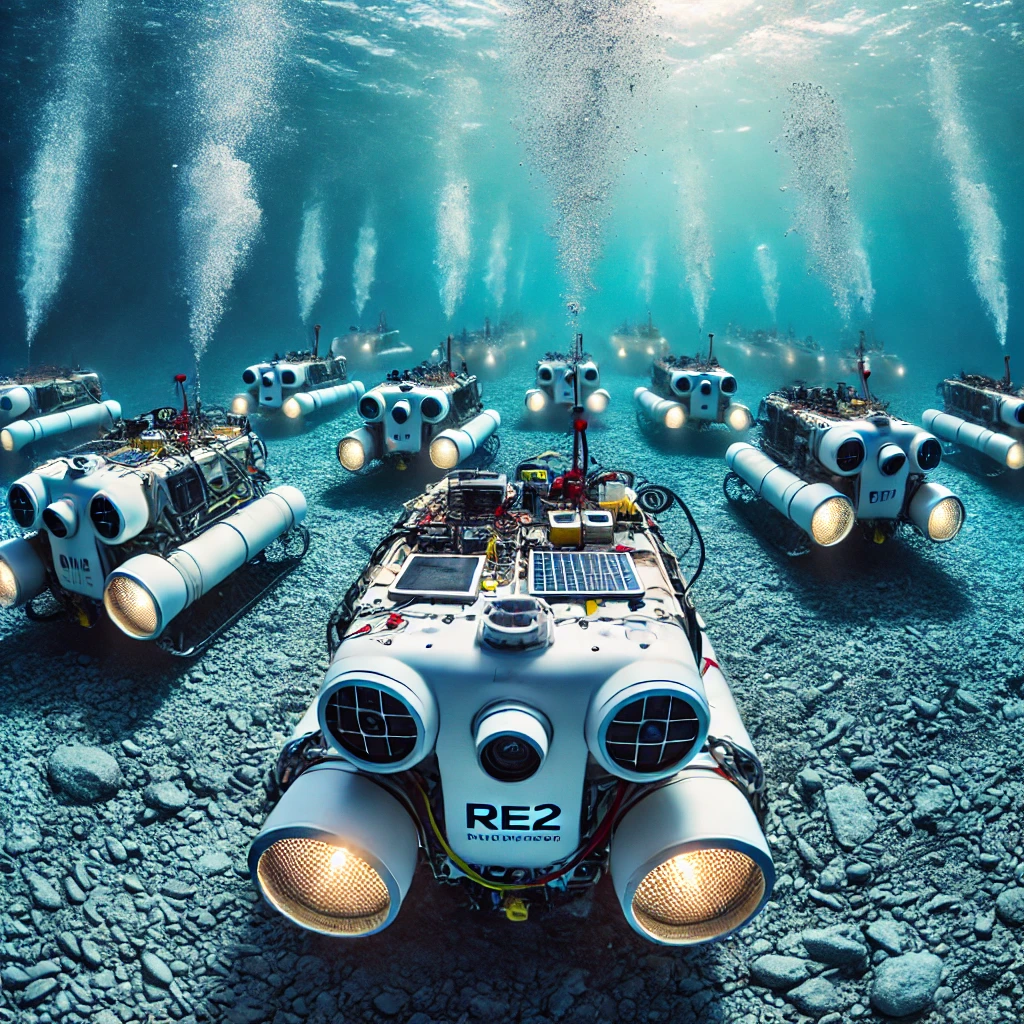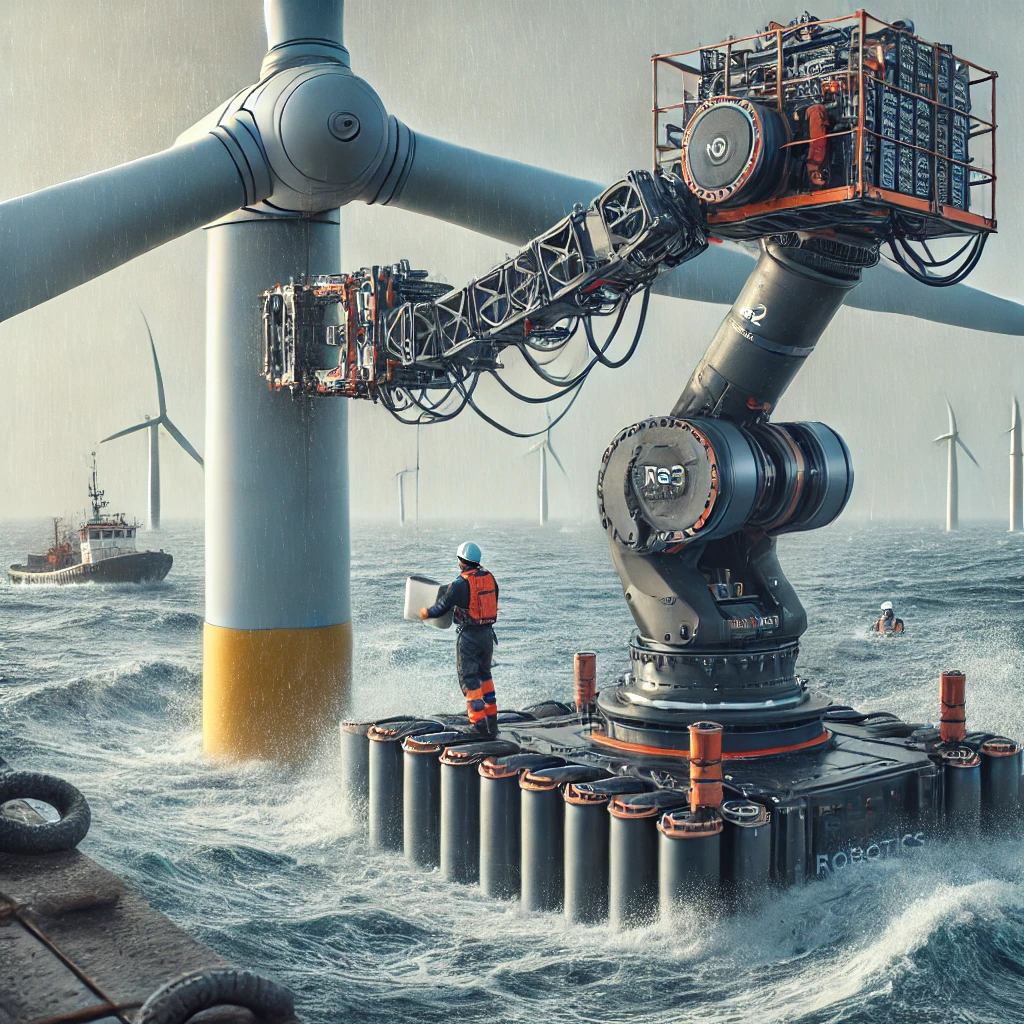The field of ocean engineering has seen remarkable advancements over the past few decades, driven by the need to explore, understand, and utilize the vast resources of the world’s oceans. Among the leading contributors to this progress is RE2 Robotics, a company currently acquired by Sarcos had carved out a niche in developing cutting-edge robotic technologies for various applications. This blog delves into how RE2 Robotics is revolutionizing ocean engineering and the broader implications of their innovations for the marine industry.
Ocean engineering is a multidisciplinary field that combines aspects of mechanical engineering, electrical engineering, civil engineering, and computer science to address challenges related to the ocean environment. Traditional ocean engineering projects have included the design and construction of offshore structures, underwater vehicles, and coastal protection systems. However, the advent of robotics has introduced new dimensions to these activities, enabling more efficient, safe, and precise operations.
The Emergence of RE2 Robotics
RE2 Robotics has emerged as a leader in the development of robotic systems designed for complex and hazardous environments, including underwater settings. Founded with a vision to create advanced robotic systems that improve human safety and productivity, RE2 Robotics has successfully applied its technologies to various sectors, including defense, healthcare, and energy. Their foray into ocean engineering has opened up new possibilities for underwater exploration and operations.
Innovations by RE2 Robotics in Ocean Engineering
Underwater Manipulators

One of the flagship innovations of RE2 Robotics in the realm of ocean engineering is the development of advanced underwater manipulators. These robotic arms are designed to perform intricate tasks in challenging underwater environments, such as deep-sea exploration, marine biology research, and underwater construction. The precision and dexterity of RE2 Robotics’ manipulators make them invaluable tools for ocean engineers, allowing for tasks that were previously difficult or impossible to perform remotely.
RE2 Robotics’ underwater manipulators are equipped with sophisticated sensors and control systems that allow them to operate with a high degree of autonomy or under remote human supervision. These manipulators can be mounted on remotely operated vehicles (ROVs) or autonomous underwater vehicles (AUVs), providing them with the ability to interact with their surroundings and perform tasks such as sampling, cutting, welding, and assembling structures underwater.
Autonomous Underwater Vehicles (AUVs)
Autonomous Underwater Vehicles (AUVs) have become essential tools in oceanography, environmental monitoring, and underwater archaeology. RE2 Robotics has been at the forefront of integrating their advanced robotic systems into AUVs, enhancing their capabilities for autonomous navigation, data collection, and mission execution. By leveraging RE2 Robotics’ technologies, AUVs can now operate more efficiently and effectively, providing critical data and insights for ocean engineers.
RE2 Robotics’ AUVs are designed with modular architectures, allowing for easy integration of various sensors and payloads. This flexibility enables AUVs to be tailored to specific mission requirements, whether it’s mapping the seafloor, inspecting underwater infrastructure, or monitoring marine ecosystems. The use of advanced algorithms for navigation and obstacle avoidance ensures that these AUVs can operate safely and autonomously in complex underwater environments.
Enhancing Offshore Energy Production
The offshore energy sector, particularly oil and gas extraction and renewable energy generation, has greatly benefited from the innovations of RE2 Robotics. Their robotic systems are employed in the inspection, maintenance, and repair of offshore structures, such as oil rigs and wind turbines. The ability of RE2 Robotics’ technologies to operate in harsh and hazardous conditions reduces the risk to human workers and ensures continuous and reliable energy production.
Inspection and Maintenance

Regular inspection and maintenance of offshore structures are crucial for ensuring their integrity and safety. Traditionally, these tasks have been carried out by human divers, who face significant risks due to the challenging underwater environment. RE2 Robotics has developed robotic systems equipped with advanced sensors and imaging technologies that can perform detailed inspections and maintenance tasks autonomously or remotely. This not only enhances safety but also improves the efficiency and accuracy of these operations.
RE2 Robotics’ inspection robots are capable of conducting non-destructive testing (NDT) techniques, such as ultrasonic testing, magnetic particle inspection, and visual inspections using high-resolution cameras. These robots can detect and analyze structural defects, corrosion, and other issues that may compromise the safety and functionality of offshore structures. By providing real-time data and analytics, these robotic systems enable proactive maintenance and reduce the likelihood of costly failures and downtime.
Renewable Energy Solutions
Renewable energy generation from ocean resources, such as offshore wind and tidal energy, is gaining traction as a sustainable solution to the world’s energy needs. RE2 Robotics is playing a key role in this sector by developing robotic systems that assist in the installation, maintenance, and monitoring of renewable energy infrastructure. Their technologies enable precise and efficient operations, contributing to the overall feasibility and scalability of ocean-based renewable energy projects.
RE2 Robotics’ robotic systems are designed to handle the unique challenges associated with offshore renewable energy projects. For example, installing and maintaining offshore wind turbines require precise positioning and secure fastening of large components in dynamic marine environments. RE2 Robotics’ robotic arms and AUVs are equipped with the dexterity and stability needed to perform these tasks with high precision. Additionally, their robotic systems can be used to monitor the performance and health of renewable energy infrastructure, ensuring optimal efficiency and longevity.
Advancing Marine Research and Exploration
Marine research and exploration have been significantly advanced by the contributions of RE2 Robotics. Their robotic systems are used in a variety of scientific missions, ranging from deep-sea exploration to coral reef monitoring. The ability to operate in extreme conditions and gather high-quality data is crucial for advancing our understanding of the marine environment.
Deep-Sea Exploration

Exploring the deep sea presents numerous challenges due to the extreme pressure, low temperatures, and lack of light. RE2 Robotics has developed robotic systems that can withstand these harsh conditions and perform complex tasks, such as sample collection, habitat mapping, and biological studies. These advancements are opening up new frontiers in marine science, providing insights into the largely unexplored depths of the ocean.
RE2 Robotics’ deep-sea exploration robots are equipped with advanced imaging and sensing technologies, such as high-definition cameras, sonar systems, and environmental sensors. These robots can capture detailed images and data from the deep ocean, revealing new species, geological formations, and ecosystems. The ability to conduct long-duration missions without human intervention allows scientists to gather continuous data and monitor changes in the deep-sea environment over time.
Coral Reef Monitoring
Coral reefs are vital ecosystems that support a diverse array of marine life. Monitoring the health of coral reefs is essential for conservation efforts and understanding the impacts of climate change. RE2 Robotics has created robotic systems that can conduct detailed surveys of coral reefs, capturing high-resolution images and data that help scientists assess the health and biodiversity of these critical habitats.
RE2 Robotics’ coral reef monitoring robots are designed to operate in shallow and mid-depth waters where coral reefs are typically found. These robots use advanced imaging techniques, such as photogrammetry and 3D mapping, to create detailed models of coral reefs. By comparing these models over time, scientists can detect changes in coral health, such as bleaching events, disease outbreaks, and physical damage. The data collected by these robots also contribute to conservation efforts by identifying areas that require protection and restoration.
The Future of Ocean Engineering with RE2 Robotics
The ongoing advancements by RE2 Robotics in ocean engineering are paving the way for a future where robotic systems play an integral role in exploring, utilizing, and protecting the world’s oceans. As these technologies continue to evolve, we can expect even more innovative solutions that address the complex challenges of the marine environment.
Collaborative Efforts and Industry Partnerships
The success of RE2 Robotics in ocean engineering is also attributed to their collaborative efforts with industry partners, research institutions, and government agencies. By working together, they are able to leverage expertise and resources to develop cutting-edge technologies that have a real-world impact. These partnerships are crucial for driving innovation and ensuring that the benefits of robotic systems are realized across various sectors of the marine industry.
RE2 Robotics has established partnerships with leading organizations in the ocean engineering field, such as marine research institutes, offshore energy companies, and environmental organizations. These collaborations facilitate the exchange of knowledge and resources, enabling the development of more advanced and effective robotic systems. For example, joint research projects with marine biologists can lead to the creation of specialized robots for ecological studies, while partnerships with energy companies can result in robots tailored for specific offshore applications.
Sustainability and Environmental Impact

One of the key considerations for the future of ocean engineering is sustainability and minimizing the environmental impact of human activities. RE2 Robotics is committed to developing technologies that promote sustainable practices, such as reducing the need for human intervention in hazardous environments and enabling more efficient use of resources. Their robotic systems are designed with environmental considerations in mind, ensuring that they contribute positively to the health and preservation of marine ecosystems.
RE2 Robotics’ commitment to sustainability is reflected in their approach to robotic design and deployment. For instance, their robots are engineered to minimize energy consumption and reduce their environmental footprint. Additionally, by enabling remote and autonomous operations, RE2 Robotics’ technologies reduce the need for manned missions, thereby lowering the risk of environmental disturbances and accidents. This focus on sustainability ensures that the benefits of robotic systems are realized without compromising the integrity of marine ecosystems.
RE2 Robotics is at the forefront of a technological revolution in ocean engineering, bringing advanced robotic systems to the forefront of marine operations. Their innovations in underwater manipulators, autonomous underwater vehicles, and offshore energy solutions are transforming the way we explore, understand, and utilize the ocean environment. As we look to the future, the continued advancements by RE2 Robotics will undoubtedly play a crucial role in addressing the challenges and opportunities of ocean engineering, ensuring a safer, more efficient, and sustainable approach to interacting with our planet’s most vast and mysterious frontier.
Through their dedication to innovation and collaboration, RE2 Robotics is setting a new standard for what is possible in ocean engineering, making significant strides towards a future where the potential of the ocean is fully realized, while preserving its integrity for generations to come. The integration of robotic systems into ocean engineering not only enhances human capabilities but also ensures the protection and sustainability of the marine environment, securing the future of our oceans for future generations.










